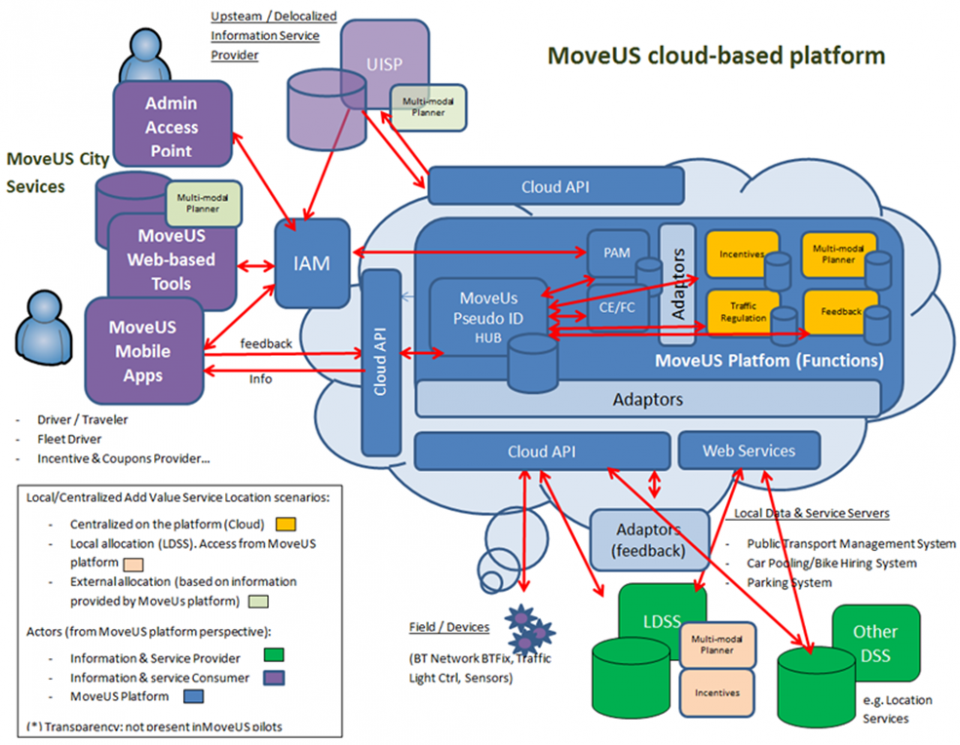A cloud-based mobility management platform integrating different transport and traffic management components which are able to collect heterogeneous data and process these data to infer valuable information of the traffic status and users’ mobility patterns, ensuring data privacy and security all along the handling process.
The data is collected in different formats and come from different sources: asynchronously from the user through the mobile application (e.g. mobility patterns, preferences) or synchronously (position in real time), from conventional sensors and ITS systems and from historic databases (e.g. public transportation schedules) or mobility companies.
The main aspects of the architecture and service delivery platform are:
Architecture and business models/scenarios
- Cloud-based Mobility Service Platform architecture definition
- Flexibility on the allocation of functionalities, aiming to cover the most possible implementation scenarios and use-cases not only in the pilots but also in other adopting cities:
- Local (provided by existing local data/service servers and used internally)
- Fully supported by the MoveUs platform (cloud located) and/or
- External (new City Services apps/webs).
- Business-models according cloud and functional deployment scenarios
Platform middleware and enablers
- Data adaptors that transform heterogeneous input formats into internal model
- Common Agreed Standardized Interface (CAI), which determines exactly the information exchange and syntaxes, providing a standardized access.
- Different communication models: pull, publish/subscribe.
Service access control and security/trust management
- Horizontal and system-wide security analysis and design aspects in close relationship with data protection principles for end users
- Privacy and Security By Design approach
- Security & Privacy Best Practice Guidelines for platform design
- Independent Identity & Access Management (IAM) component responsible for establishing users' identity during registration and authentication.
- Pseudo ID Hub (PI Hub) manages the correlation between registered UserIds and Pseudo Ids used for storing their information
Increasing service intelligence
- User-centric services. Content sharing in a user-friendly and secured way
- Personalized service provision based on mobility patterns/habits and real time data
- Data analytics methods (optimization, prediction and pattern analysis)
- Context awareness functionality and application tailoring (geographical, user profiling).
City-service creation and life-cycle management
- Multiplatform target framework
- Deployment onto the cloud infrastructure of new applications

